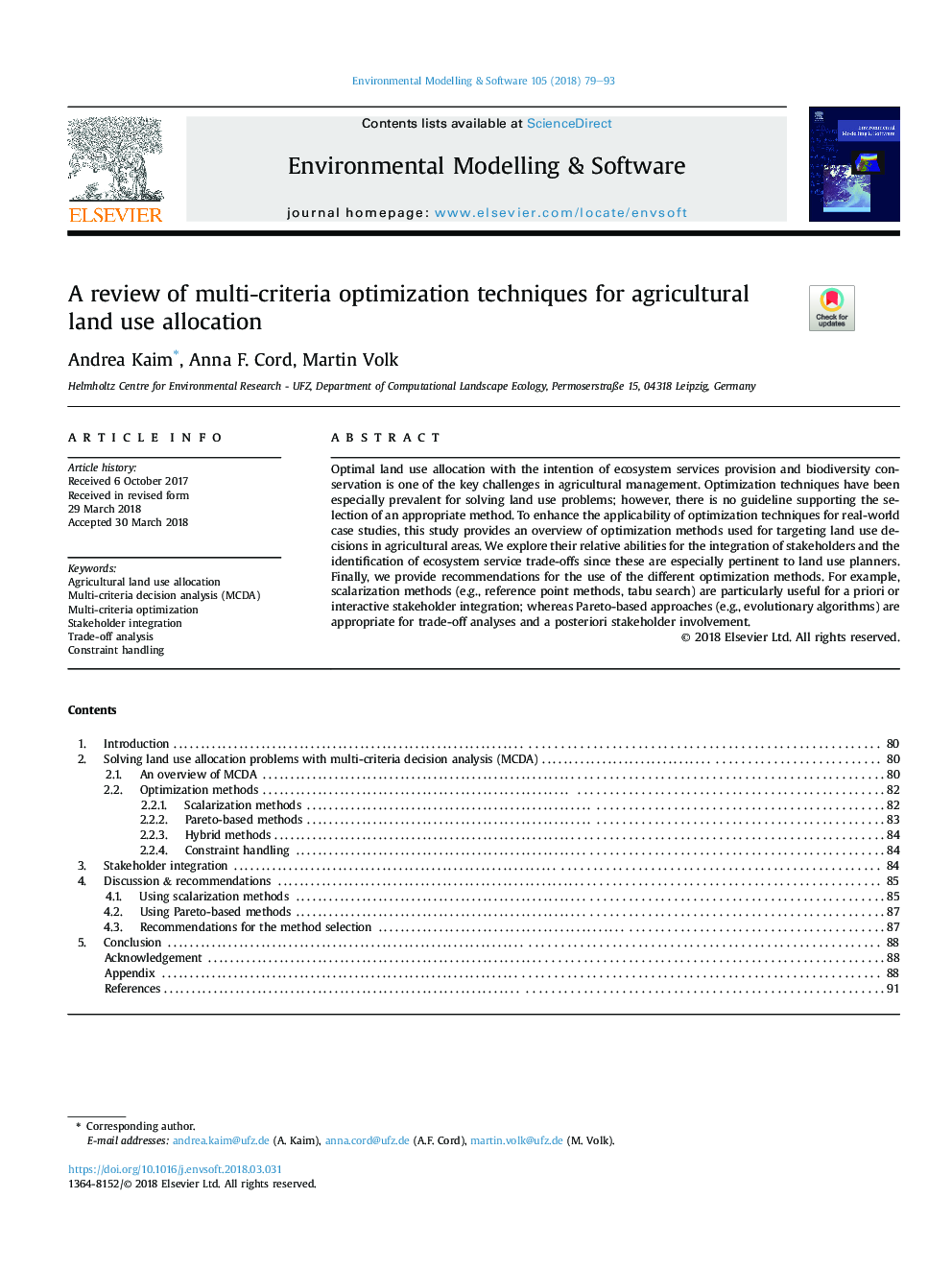| Article ID | Journal | Published Year | Pages | File Type |
|---|---|---|---|---|
| 6961997 | Environmental Modelling & Software | 2018 | 15 Pages |
Abstract
Optimal land use allocation with the intention of ecosystem services provision and biodiversity conservation is one of the key challenges in agricultural management. Optimization techniques have been especially prevalent for solving land use problems; however, there is no guideline supporting the selection of an appropriate method. To enhance the applicability of optimization techniques for real-world case studies, this study provides an overview of optimization methods used for targeting land use decisions in agricultural areas. We explore their relative abilities for the integration of stakeholders and the identification of ecosystem service trade-offs since these are especially pertinent to land use planners. Finally, we provide recommendations for the use of the different optimization methods. For example, scalarization methods (e.g., reference point methods, tabu search) are particularly useful for a priori or interactive stakeholder integration; whereas Pareto-based approaches (e.g., evolutionary algorithms) are appropriate for trade-off analyses and a posteriori stakeholder involvement.
Keywords
Related Topics
Physical Sciences and Engineering
Computer Science
Software
Authors
Andrea Kaim, Anna F. Cord, Martin Volk,
